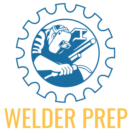Determining how long to study for the CWI exam is essential for your success.
- Understand the exam structure: Learning the format and sections is key.
- Factors to consider: Prior knowledge, experience, and study habits influence study time.
- Effective study plans: Utilizing resources and creating personalized schedules can optimize your preparation.
Maximize your chances by knowing how long to study for the CWI exam.
Understanding the CWI Exam
The Certified Welding Inspector (CWI) exam, administered by the American Welding Society (AWS), is pivotal for validating your welding inspection knowledge and skills. It comprises three distinct parts: Part A (Fundamentals), Part B (Practical), and Part C (Code Book). Understanding each section is crucial as it informs your study plan and duration.
Part A: Fundamentals
Part A consists of 150 multiple-choice questions covering various welding fundamentals. The topics include:
- Welding Processes: Familiarize yourself with common welding methods such as SMAW, GMAW, GTAW, and FCAW.
- Nondestructive Examination (NDE): Study techniques like radiographic, ultrasonic, magnetic particle, liquid penetrant, and visual testing.
- Heat Control and Metallurgy: Understand how heat affects metals during welding and post-weld treatments.
- Weld and Base Metal Discontinuities: Identify and evaluate common welding defects and discontinuities.
Part B: Practical
Part B is a hands-on, practical test that requires you to demonstrate your inspection skills. You’ll need to:
- Inspect Sample Welds: Evaluate various welded samples for defects.
- Interpret Welding Symbols and Instructions: Accurately understand and apply standard welding symbols and procedural instructions.
- Use Inspection Tools: Proficiently utilize inspection equipment like fillet weld gauges, micrometers, and calipers.
Part C: Code Book
Part C assesses your ability to navigate and interpret specific welding codes. Candidates generally choose one code book, such as:
- AWS D1.1 (Structural Welding Code – Steel)
- API 1104 (Standard for Welding Pipelines and Related Facilities)
Factors Influencing Study Duration
Tailor your study plan by considering factors that can impact how long you need to study for the CWI exam.
Prior Knowledge and Experience
Your prior knowledge and hands-on experience in welding will significantly influence your study duration. If you’re a seasoned professional with extensive welding and inspection experience, you may require less time. Conversely, newcomers or those with limited experience should plan for a more extended study period.
Study Habits and Learning Style
Your study habits and learning style play a critical role. Efficient and consistent study routines help maximize your preparation. Identify whether you learn best through visual aids, hands-on practice, or reading materials. Adapt your study plan to leverage your strengths.
- Consistent Study Schedule: Break your study material into manageable chunks and review regularly.
- Active Learning: Engage with practice questions, hands-on practice, and discussions.
- Study Resources: Utilize available textbooks, online welding courses, and AWS resources.
Available Resources
Optimal resources can streamline your study process. Leverage:
- Textbooks and Study Guides: Books like “AWS Welding Inspection Handbook” and “Weld Symbols Quick Card” are invaluable.
- Online Courses and Workshops: Online platforms offer structured courses on CWI exam topics.
- Practice Exams: Taking timed practice exams simulates real exam conditions and identifies knowledge gaps.
Personal and Professional Commitments
Your personal life and professional obligations also determine your available study time. Balance your work, family responsibilities, and study sessions:
- Set Realistic Goals: Define clear, achievable study milestones.
- Flexible Time Management: Adjust your study schedule around work shifts and family time.
Recommended Study Duration
While individual needs vary, these general guidelines can help you plan your study timeline:
- Experienced Welders: 2-3 months of focused study (10-15 hours per week).
- Intermediate Knowledge: 3-5 months of consistent study (10-15 hours per week).
- Newcomers to Welding: At least 6 months of diligent study (15-20 hours per week).
Adapting your study duration based on these factors ensures you’re well-prepared for the CWI exam.
Crafting Your Study Plan
Creating a detailed and personalized study plan is essential for systematic preparation.
Assess Your Starting Point
Begin by evaluating your current knowledge and skills. Use diagnostic tests or AWS’s practice exams to identify strengths and areas needing improvement. This assessment helps you prioritize subjects that require more attention.
Set Clear Objectives
Define clear study objectives for each part of the CWI exam. Break down the broad syllabus into specific topics and set weekly or monthly targets. For instance:
- Part A Goals: Master specific welding processes, understand heat control, and practice multiple-choice questions.
- Part B Goals: Gain proficiency in using inspection tools and interpreting welding symbols.
- Part C Goals: Familiarize yourself with your chosen code book and practice code-specific questions.
Utilize Effective Study Techniques
Incorporate a variety of study techniques to enhance retention:
- Flashcards: Create flashcards for key terms and concepts.
- Mnemonics: Use mnemonic devices to remember complex information.
- Group Study: Join a study group or find a study partner for collaborative learning.
Allocate Regular Study Time
Dedicate specific times each day or week to studying. Consistency is crucial:
- Daily Study: Aim for at least one hour of focused study each day.
- Weekly Review: Reserve longer study sessions on weekends for in-depth review and practice exams.
- Breaks and Rest: Take regular breaks to avoid burnout and maintain productivity.
Reinforce with Practice
Practical application reinforces theoretical knowledge. Incorporate:
- Hands-On Practice: Simulate inspection tasks and practice with actual welding samples.
- Mock Exams: Take full-length, timed practice exams to build exam stamina and familiarity.
A robust study plan that includes these elements ensures a well-rounded preparation for the CWI exam.
Conclusion
Studying for the CWI exam requires a well-structured approach tailored to your individual needs. By understanding the exam structure, considering personal factors, and utilizing effective study strategies, you can optimize your preparation and maximize your chances of success.
This Output Will Go Straight to Publishing.
Factors Influencing Study Duration
Your preparation time for the CWI exam is influenced by various personal and educational factors.
Prior Knowledge and Experience
Prior Knowledge and Experience significantly impact the study duration. Here’s how your background can affect the time needed:
- Extensive Welding Background: If you have many years of hands-on welding and inspection experience, you’ll need less time preparing. Focus on refreshing codes and practicing inspection techniques.
- Intermediate Knowledge: With some welding experience, you should plan to fill any gaps in your knowledge and get familiar with the exam’s practical aspects. This provides a more thorough understanding.
- Novices: Newcomers or those with limited exposure to welding might find it essential to dedicate more time to covering fundamental principles and hands-on practice.
Study Habits and Learning Style
Study Habits and Learning Style play critical roles in how efficiently you can prepare. Understand your preferred method to tailor your study plan:
- Consistent Routine: Having a daily or weekly study schedule ensures you cover all necessary material without cramming.
- Active Learning: Engage with the material through practice questions, discussions, and hands-on activities. This helps solidify your understanding.
- Utilizing Various Resources: Using multiple sources, such as textbooks, welding codes, and online courses, provides diverse perspectives and reinforces learning.
Available Resources
Access to quality resources can streamline and enhance your preparation:
- Textbooks and Guides: Comprehensive books like the “AWS Welding Inspection Handbook” offer an in-depth understanding of exam topics.
- Online Courses and Workshops: These platforms offer flexible learning schedules and interactive content. They cater to different learning styles and can provide practice exams.
- Practice Exams: Taking timed, simulated exams helps manage exam pressure and identifies areas needing improvement.
Personal and Professional Commitments
Balancing study with other life responsibilities necessitates effective time management. Here’s how you can allocate your time:
- Goal Setting: Define clear, achievable objectives for each week or month. Dividing your study into smaller, manageable sections helps maintain focus and motivation.
- Flexible Time Management: Adapt your study schedule around your work and family commitments. If needed, adjust priorities to ensure consistent study time.
General Guidelines for Study Duration
While individual needs vary, having general guidelines aids in planning:
- Experienced Welders: Allocate 2-3 months, dedicating 10-15 hours per week for focused study.
- Intermediate Knowledge: Plan for 3-5 months at 10-15 hours per week, ensuring thorough preparation.
- Newcomers: Aim for at least 6 months with 15-20 hours per week to build a solid foundation and hands-on experience.
Incorporating these factors into your study plan ensures that your preparation is realistic, systematic, and tailored to your unique needs and background.

